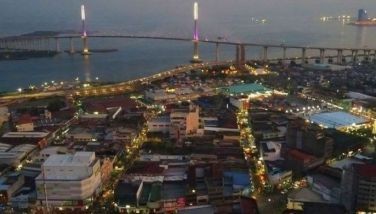Calamity declared in Cebu due to dengue
LGU intervention ‘no longer effective’
CEBU, Philippines - The Cebu Provincial Board yesterday placed the province under a state of calamity owing to the unusual increase in the number of dengue cases this year.
This was despite the contradicting opinion from the Department of Health and the Provincial Health Office over the declaration of an outbreak last week.
The declaration will allow the PHO to use P1.4 to P1.5 million in quick response fund of the Provincial Disaster Risk Reduction and Management Office to combat the mosquito-borne disease.
Board Member Christopher Baricuatro, chairman of the committee on health and social services, said the declaration is vital to maximize the use of resources and funds to address the situation.
He said the P1.5 million will also be used for purchasing posters and tarpaulins in the awareness drive along with larvaecide chemicals and misting machines.
“Given the magnitude of its effect and necessity to address and prevent the surge of dengue cases in the province, it is imperative that the entire province be declared under a state of calamity,” he said.
Dr. Niño Ismael Pastor, PHO chief on public health, said the number of dengue cases is important in determining whether the local government unit is still capable of responding effectively to the cases.
He said it is only fitting to declare a state of calamity since the LGUs and the community could no longer contain the cases.
“It means the community or local government unit has reached the point of condition wherein they are unable to cope using their existing regular resources. It could be a state of natural, biological calamity, and even armed-conflict,” he said.
He explained before the PB yesterday the difference between an outbreak and state of calamity, saying that outbreaks are abnormal occurrence of incidence compared to previous years, while calamity is a condition wherein the LGU or community is unable to respond effectively in containing the impact of the situation.
Prior to the Provincial Board sessions at 2PM, a meeting between the officials from PHO, the DOH-7, Vice Gov. Agnes Magpale, and Baricuatro was first held in the morning to clarify the differences in declaration of the dengue outbreak.
The DOH Central Visayas has maintained that the dengue cases in Cebu province has not reached outbreak levels, based on the standards set by their Central Office in Manila that are also patterned after the guidelines of the World Health Organization.
DOH-7 Chief Epidemiologist Renan Cimafranca and DOH Local Health Support Dr. Shelbay Blanco attended the meeting called by Magpale yesterday morning.
The PHO, which operates under the provincial government, said “prevalence” of the high number of cases this year now reaching 5,821 prompted it to declare an outbreak.
PHO Epidemiologist Ismael Pastor said that while the DOH-7 maintains there is no outbreak based on their standards, both agencies agree that the incidents of dengue cases this year are on “abnormal” levels.
Dr. Pastor said that beyond the differences in the definition of an outbreak, they all agree to already setup measures to control the rising number of dengue cases.
“On our part gyud sa DOH, we follow the standards and if muingon ta ug outbreak dili gyud ta maka-declare og province-wide,” said DOH-7’s Dr. Blanco in a separate interview.
With the calamity declaration, Catan said the PHO, which says that the cases were already in epidemic proportions, can already access disaster funds and other resources.
Dr. Pastor said with the new funding, the amount will be used to “mobilize” personnel in the province-wide clean up drive against dengue using a system wide approach and not confined to one or two town or city only.
Catan said interventions in the LGUs are no longer effective.
He said this year’s dengue occurrence is the highest, based on the province’s six-year historical data.
As of last week, dengue cases have reached 5,821, which is 316 more than what was recorded of September 25, 2016, or around 105 cases a week hence.
Data from the Regional Epidemiology and Surveillance Unit (RESU)-7, though, showed that dengue cases in the province is already around 7,000.
Catan explained that RESU’s figure is higher compared to PHO’s because DOH has access to private hospitals’ records.
Board Member Sun Shimura said the mayors of Tabogon, Daanbantayan, Sta. Fe and Tabuelan reported that their dengue incidence ballooned to 100 to 150 percent.
Shimura said he spoke to Tabogon Mayor Zigfred Duterte, who is asking assistance from the province to address the dengue problem in his town.
Based on PHO records, Catan said Tabogon has a prevalence dengue rate of 375 people per 100,000 population as of October 8. PHO uses prevalence rate over incidence rate, which has been used by RESU-DOH in coming up with their dengue data.
“We are using prevalence because it is not fair with those small population and small dengue cases to be classified as non-outbreak or outbreak. By adjusting for population, we will have s clearer picture of the actual attack rate per town,” he said.
Tabuelan town, for instance, has an attack rate of 85 people per 100,000 population, while Daanbantayan had an attack rate of 158 people per 100,000. — Kristine B. Quintas, Dale G. Israel
- Latest























